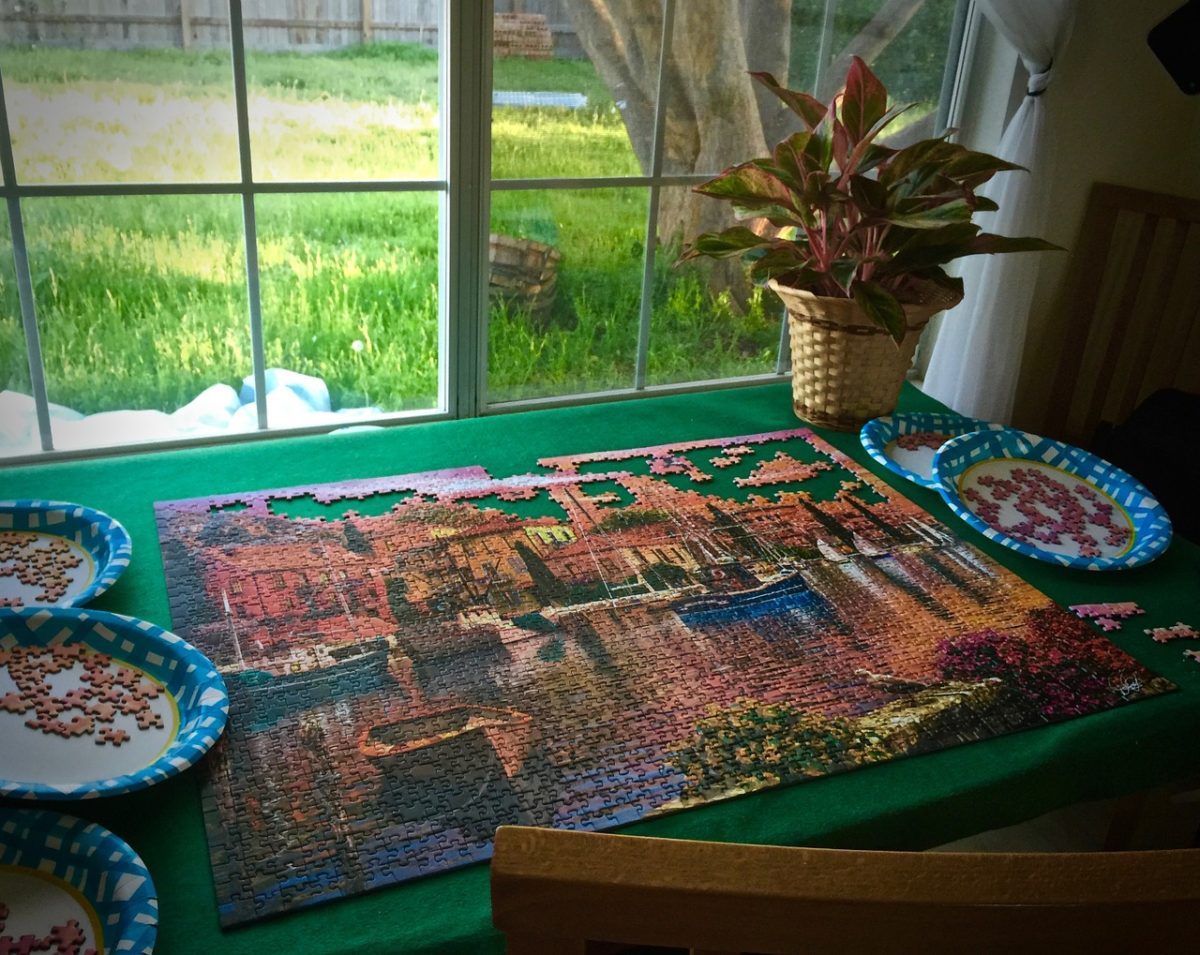
Puzzled With Life? It’s Natural.
MichaelSunnarborg / August 28, 2017 Article, Image, Link / Leave a Comment
My sister Becky loves jigsaw puzzles. In fact, I don’t remember a time in the past 20 years when there hasn’t been a puzzle in process on a card table somewhere in her house.
Putting a puzzle together can be calming and relaxing and can put our mind at ease—a natural de-stressor much like other routine tasks such as ironing or folding laundry. Research points to the benefits of solving jigsaw puzzles, because the activity exercises both the left (logic) and right (creative) hemispheres of the brain.
Solving jigsaw puzzles can also be a metaphor for how we create aspects of our lives.
Similar to starting a new puzzle, most of our ideas begin as fragmented, small pieces—not making much sense at first. Events are always coming together to form a bigger picture, and all the pieces are necessary—each piece plays a role in forming the end result. By sifting and sorting through our thoughts, we start to clump ideas together (like puzzle pieces), grouping them into similar themes—sometimes by color, sometimes by shape or size.
We find direction for assembling a puzzle from a picture on the box, much like having a vision for the larger picture for our lives. These images provide a road map and help give us direction. Even if we don’t have the puzzle box or a photo to refer to, we can trust the process, knowing that the larger picture will materialize and form something greater than the individual pieces could ever do. This is part of visualizing the result and beginning with the end in mind.
Puzzles allow us to exercise our power of choice. We can focus on solving different areas of the puzzle, bringing clarity and detail to the picture. We can also choose which areas of our lives to focus on—sometimes it’s our career; other times, family or relationships. Each time we concentrate on something, we find more clarity and depth.
Simultaneously, we are collecting and forming edge pieces that create the borders of the puzzle or our personal boundaries.
The completed puzzle sections become our manifested dreams and life events—a fully completed puzzle can signify a major life accomplishment or chapter. Like jigsaw puzzles, there are always more experiences to be created and realized in our lives.
The next time you feel puzzled by life, consider these parallels to jigsaw puzzles:
See the big picture. Even if you don’t have the puzzle box or a road map, create a vision of the final result in your mind’s eye. Holding a larger vision can have powerful results, even when we can only see the smaller image in the moment.
Process the pieces. Learn to sift, sort, and prioritize the pieces and put them where they belong. If you are unsure, put them off to the side until you know where they fit.
Practice patience. Take breaks and be willing to walk away and get a fresh perspective. Believe in the bigger vision and be willing to work on it one section at a time. Trust the process and keep the faith—and the larger picture will slowly start to reveal itself.
Appreciate the variety. Know that each area is unique and that is good. Spot the similarities and differences and learn to appreciate the variety that it brings. There will always be new areas to focus on and solve.
Accept the results. Often we may not see the final picture, but we can still trust that the vision is coming together—even if we don’t know what it’s going to look like. Sometimes, the results can be even more beautiful than we could have imagined when all the pieces are finally in place.
Life moves on. Be willing to create new and more elaborate pictures, embracing the variety and keeping a spirit of curiosity about what can be created next. Sometimes packing it up and moving on to a new vision brings change—and that is good, too.
Life will always bring us more opportunities to see new visions and create new experiences. There will always be new puzzles to solve.
Michael Thomas Sunnarborg helps people maintain balance during transitions in their work, relationships, and life. Learn more at michaelsunnarborg.com
Image: Pixabay.com



